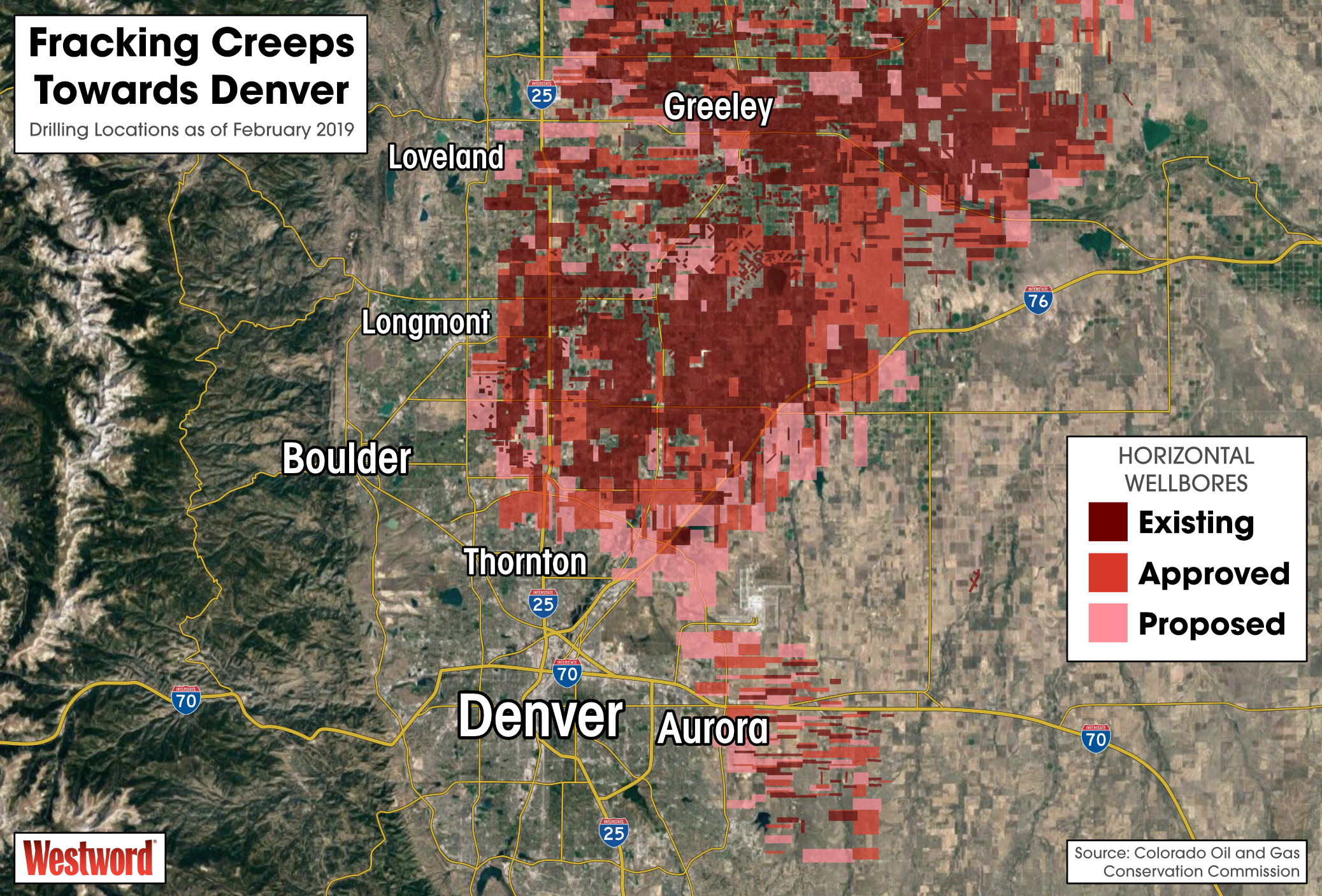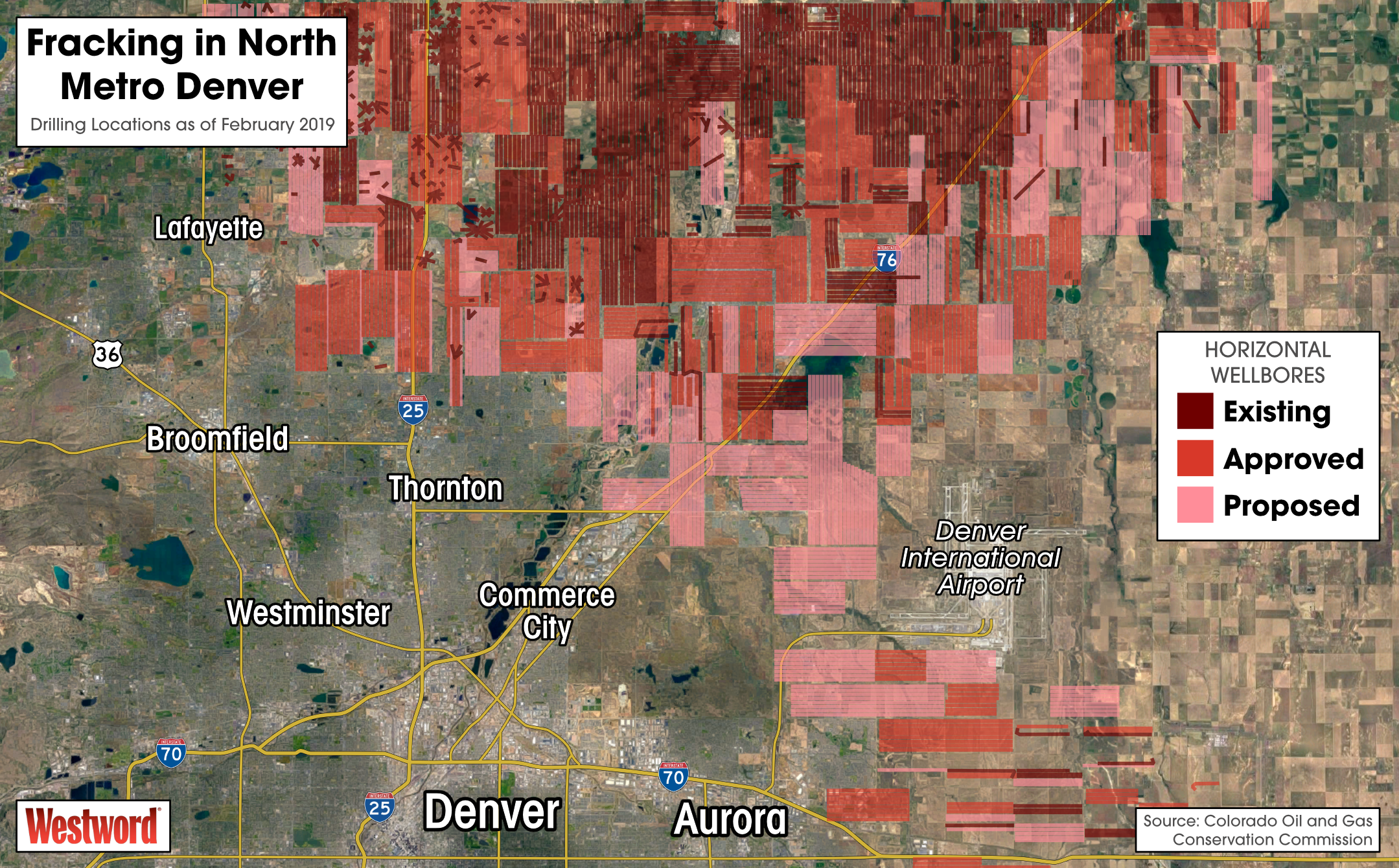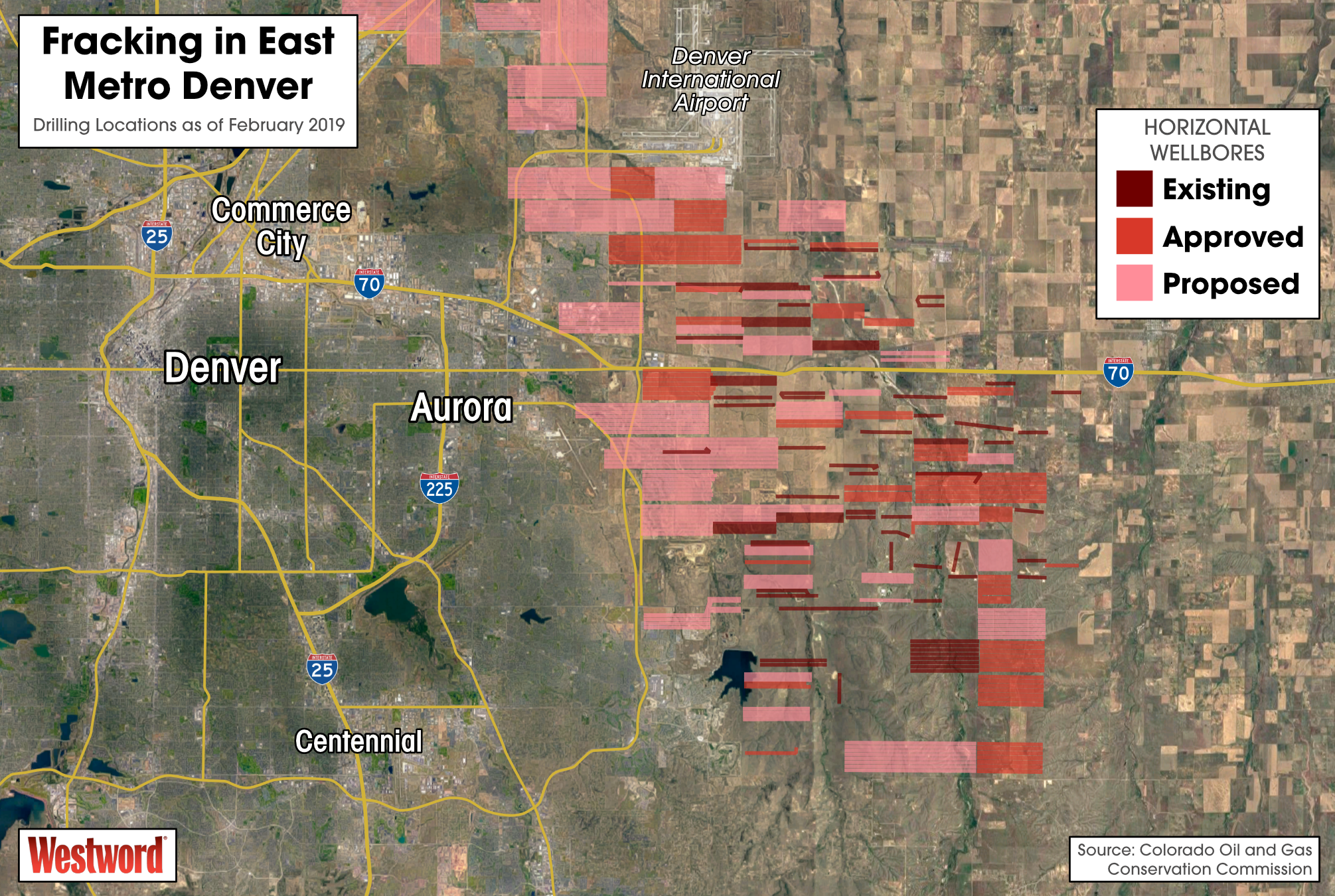
sasacvetkovic33/iStock

Audio By Carbonatix
As early as this week, Democrats at the State Capitol are expected to officially propose a major overhaul of Colorado oil and gas law, setting the stage for the first high-stakes legislative battle over fracking in five years. But one thing has changed since lawmakers tried and failed to reform drilling regulations in 2014: For tens of thousands of residents within Denver’s dense urban core, this issue is now literally closer to home.
The communities on the front lines of Colorado’s fracking wars increasingly aren’t just far-flung exurbs like Firestone, Erie or Lafayette; they’re also inner-ring municipalities like Thornton, Commerce City and Aurora, where dozens of new extraction sites and hundreds of individual wells are expected to be drilled in the coming years. Four proposed projects near Denver International Airport even plan to drill underground within city limits, though the surface sites will be located in Aurora and unincorporated Adams County.
Maps showing the locations of oil and gas wells in Colorado, with each well represented by a dot, have some key limitations. These maps don’t always distinguish between active and inactive wells, and when they do, it can be difficult to make sense of the clusters of tens of thousands color-coded dots layered on top of each other. And with more than 40,000 abandoned wells, many of them decades old, scattered across the state, these well maps don’t always paint an accurate picture of where and how oil and gas drilling has expanded so rapidly in Colorado in the past fifteen years.
Directional wellbore data maintained by the Colorado Oil and Gas Conservation Commission provides another way to visualize the industry’s spread. By mapping the horizontal, underground drilling holes used in modern oil and gas extraction, this data shows how drillers, having steadily crisscrossed rural areas in southern Weld County to the point of saturation, are now targeting expansion into dense residential areas directly north of Denver.

Westword
While fracking – the common term for hydraulic fracturing, a process by which water, sand and chemicals are blasted into underground rock formations to loosen up oil and gas for extraction – has been the target of far more attention and controversy, horizontal drilling deserves no less credit for the industry’s recent explosive growth. Together, the two technologies have transformed oil and gas extraction into a complex, concentrated, heavy-industrial enterprise. From a single surface site, known as a well pad, operators can drill dozens of horizontal wells that stretch for miles underground in any given direction.
The vast majority of modern oil and gas drilling in Colorado has occurred in the Wattenberg Field, an oil- and gas-rich patch situated roughly between Denver and Greeley. But the fossil-fuel reserves buried deep underground in the Wattenberg have no clearly defined boundaries, and drillers’ rush to expand south suggests they may extend farther into Denver than once thought. And that expansion has put powerful drilling interests on a collision course with the residents of fast-growing neighborhoods on the edges of the Denver metro area, who never expected to count large, disruptive, potentially hazardous fracking sites among their next-door neighbors.
Commerce City

Westword
More than 200 new wells spread across ten drilling sites have been proposed in and around residential areas in northern Commerce City, with new, fast-growing housing developments like Reunion, Turnberry and Buffalo Mesa set to be impacted. Activists from groups like North Range Concerned Citizens are pressing Commerce City Council to delay any agreement with Extraction Oil & Gas, the operator of most of the proposed drilling projects, until after the legislature has passed so-called local control measures that would give it more authority over the permitting process.
Commerce City is already home to several major sources of industrial pollution, like the Suncor Oil Refinery, which emits 8.5 tons of cyanide gas per year over low-income neighborhoods in north Denver, state records show. Residents fear the effects that further emissions from new oil and gas facilities could have on the area’s air quality – and studies have shown that the ozone-forming pollutants emitted by fracking sites are a major contributor to the Denver region’s unhealthy levels of smog.
Aurora

Westword
The east metro Denver area is the oil and gas industry’s newest frontier, with a few scattered existing wells set to be joined by a slate of major drilling projects in the coming years. While some of those proposals are located on farmland in unincorporated Adams and Arapahoe counties, at least a dozen projects have been approved or proposed within Aurora city limits, in and around subdivisions on its eastern edge, including Cross Creek, Murphy Creek and East Quincy Highlands.
In Aurora, Commerce City and elsewhere, most of the projects nearest to Denver are still pending approval by state regulators at the COGCC. But the agency’s permitting process has long been essentially a rubber-stamp affair, with drilling applications virtually never rejected. That could change, however, if lawmakers at the Capitol overhaul the COGCC’s mission to place greater emphasis on health and safety – making the stakes of the legislature’s imminent battle over fracking reforms that much higher, for drillers and metro Denver residents alike.